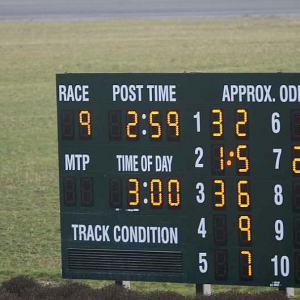Mutuel Feeling: Factoring Factors
More data isn’t always better for the handicapper
This exclusive courageous-wagering series continues into 2018. The heart of the matter this year will be reducing the work involved for the three roles of the harness racing pari-mutuel player: the handicapper, the bettor, and the accountant.
We will learn more about how each wields their skills in league with one another, working in harmony to address profits, only now we will present a simpler process, sans a clutter of figures and intrinsic information we have proven has long been more a burden than a buddy to harness bettors.
Because the nature of courageous wagering is to be methodical with each transaction, the race-by-race processes can be reduced to the least common denominator for each role; relying upon math we will justify the ease of the approach, mostly by shattering use of the tiresome elements thought imperative to win at pari-mutuels—especially harness racing.
Everything starts with the handicapping role.
So we will revisit that role, explaining the brunt of his or her focus choosing races, measuring their competition and assigning odds. Over the next few columns we will also do this with the roles of the bettor and accountant as well, until the steps to play for profit are automatic and modest, at best, to follow.
Through the decades, the elements emphasized as imperative when handicapping a race have been consistent—class, speed, post position, track size, trip, and driver. The positives and the negatives about each have been copious and contentious among professional and casual players. However, no specific values that can be trusted have ever been proven for these elements. Always, the handicapper must determine how much each one plays in a specific race and there rests the unsolvable problem.
Statistics available to a handicapper are never designed to deliver a figure with the kind of accuracy needed for a handicapper to have an edge over the betting crowd. Unless you personally calibrate an enormous sample grouping, the result of any small sampling or current trend are moot.
Doing all the work needed to come up with a trusted value of any factor would mean life as you know it would cease.
As an example, take the driver factor. What is a precise mathematical answer to the value of any certain driver in any race? First off, it is not “so far this year” that can be counted upon. In a study that would matter at all, one would have to find thousands of examples and do so in categories. It isn’t enough to study a driver’s win percentage (and all studies must be percentage-based, not raw number-based) you would also have to study aspects of the wins, such as a driver’s performances winning with betting favorites, second choices, third choices, etc. The sheer time involved in accumulating and calculating the data would diminish your activity in all other aspects of your life—and this is just finding the worth of a driver in a race; imagine also doing valid studies for other factors. Even though digital programs allow for quicker calculations of data, doing all the work needed to do to come up with a trusted value of any factor would mean life as you know it would cease.
So, assuming you will not devote all of your waking hours to gathering data, how does the handicapper evaluate a race’s factors?
The answer is simple for most factors and it is based upon a proportion and, again, arithmetic. Assuming what I have established above, few players, if any, are equipped with credible statistics concerning any factor. Therefore, if you do not place any specific weight on a factor, you are at least equal with your pari-mutuel opponents when evaluating that factor.
Using the driver factor again, you could be very sure that bettors are weighing the drivers’ worth on nothing but unfaithful figures and, worse, on bias. This is as true as a mountain is high. “I like Delaney Driver,” says one player, “because he always gives a drive his all and I have won some major bucks when he’s driven one of my bets.”
There is always a counterpoint. Another bettor claims, “Delaney Driver’s a bum. He never wins for me or when I need him to do well.” As well, even respected insiders fuel their evaluations of drivers with dire judgment. Once, a track handicapper told me that one driver in the horseman community of a raceway “couldn’t drive a rat into a cheese factory.”
So, the handicapper truly gets an edge by resigning to “all things being equal” when it comes to the driver factor. This position may seem negligent at first, but the handicapper becomes cozy after so-many races prove that no other bettor has weighted the driving factor to any significant advantage.
Next month, we continue with more proof on how the handicapper appraises other factors when evaluating a race.
by Frank Cotolo
To see inside the January 2018 edition of Hoof Beats, click here.



